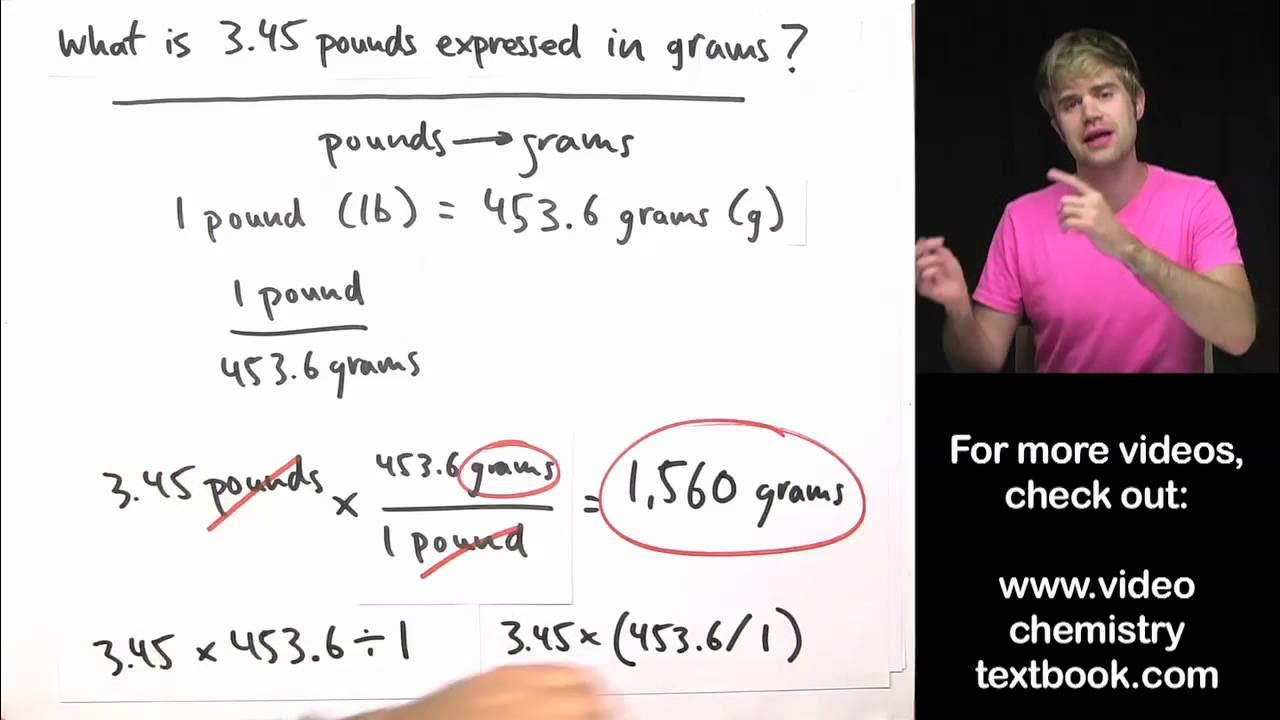Dimensional Analysis - An Introduction
Summary
TLDRThis chemistry lesson introduces dimensional analysis, a crucial skill for unit conversion. The instructor emphasizes the importance of using conversion factors to change units without altering a value's magnitude. Through examples, the lesson demonstrates converting units like feet to inches and centimeters to feet, highlighting the process's accuracy over mental calculations. The tutorial also addresses complex conversions involving unfamiliar units, such as converting ancient Hebrew measurements, underscoring the method's universal applicability.
Takeaways
- 🔢 Dimensional analysis is a fundamental skill used in chemistry for converting between different units.
- 📚 The method involves multiplying a given value by a conversion factor that equals one, thus changing the unit without altering the value.
- ✅ Multiplying by one (or a fraction that equals one) is a key concept, as it allows for unit conversion without changing the numerical value.
- 📏 Conversion factors are set up with the initial unit in the denominator and the target unit in the numerator to facilitate cancellation.
- 📉 It's crucial to perform dimensional analysis step by step to avoid common mistakes such as incorrect multiplication or division.
- 🔄 For simple conversions, a single conversion factor is used, but more complex conversions may require a sequence of conversion factors.
- 📐 The process involves setting up a fraction bar with the conversion factor, ensuring that units align correctly for cancellation.
- 📝 Significant figures must be considered in the final answer; the number of significant figures in the original value should match the final result.
- 🌐 Understanding and applying conversion factors is essential even for unfamiliar or complex units, as demonstrated with ancient Hebrew measurements.
- 💡 Dimensional analysis is not just a mathematical tool but also a systematic approach to problem-solving in chemistry and related fields.
Q & A
What is dimensional analysis?
-Dimensional analysis is a fundamental skill used in chemistry that allows for the conversion of one unit to another, ensuring the value of the quantity remains unchanged while the unit changes.
Why is multiplying by a fraction with a numerator and denominator equal to one important in dimensional analysis?
-Multiplying by a fraction where the numerator and denominator are equal to one is important because it allows for the conversion of units without changing the value of the quantity, which is essential for maintaining accuracy in calculations.
What is the significance of the number 1 in dimensional analysis?
-In dimensional analysis, the number 1 is significant because it represents a conversion factor that allows for changing the unit of a quantity without altering its value.
How does the process of dimensional analysis help in avoiding calculation errors?
-Dimensional analysis helps in avoiding calculation errors by providing a systematic approach to unit conversion, ensuring that the correct mathematical operation (multiplication or division) is applied as per the conversion factor.
What is the correct way to convert 36 feet to inches using dimensional analysis?
-To convert 36 feet to inches, you multiply 36 by the conversion factor (12 inches/1 foot), which results in 432 inches, and then round it to 430 inches considering significant figures.
Why is it incorrect to simply divide 36 by 12 when converting feet to inches?
-Simply dividing 36 by 12 without using the proper conversion factor can lead to incorrect results because it does not account for the unit cancellation, which is a crucial part of dimensional analysis.
How many significant figures should be in the answer when converting units?
-The number of significant figures in the answer should match the number of significant figures in the original quantity given in the problem.
What is the conversion factor used to convert centimeters to inches?
-The conversion factor used to convert centimeters to inches is 1 inch = 2.54 centimeters.
How do you convert 96 centimeters to inches using dimensional analysis?
-To convert 96 centimeters to inches, you multiply 96 by the conversion factor (1 inch/2.54 centimeters), resulting in approximately 37.8 inches.
What is the process for converting 819 centimeters to feet?
-To convert 819 centimeters to feet, you first convert centimeters to inches using the factor (1 inch/2.54 centimeters), then convert inches to feet using the factor (1 foot/12 inches), resulting in approximately 26.9 feet.
Why is it recommended not to perform unit conversions in your head for unfamiliar units?
-For unfamiliar units, it is recommended to use dimensional analysis rather than doing the conversion in your head to avoid errors, as unfamiliar units may not intuitively convey the correct conversion relationship.
Outlines

This section is available to paid users only. Please upgrade to access this part.
Upgrade NowMindmap

This section is available to paid users only. Please upgrade to access this part.
Upgrade NowKeywords

This section is available to paid users only. Please upgrade to access this part.
Upgrade NowHighlights

This section is available to paid users only. Please upgrade to access this part.
Upgrade NowTranscripts

This section is available to paid users only. Please upgrade to access this part.
Upgrade NowBrowse More Related Video
5.0 / 5 (0 votes)





